Learn how to raise dairy goat wethers (castrated male goats) for meat as a sustainable and ethical option for homesteaders who keep goats for milk. The meat delicious and nutritious, and because goats are a smaller ruminant animal, they are easy to harvest yourself right on the homestead.
This spring we hit a new homestead milestone by raising our dairy wethers for meat, and butchering them at home ourselves with minimal equipment. Over the next couple of blog posts I’ll share how we learned to do this ourselves, the simple set-up we used, and how we like the meat!
Trigger Warning: some images and descriptions in this blog post may be considered graphic.
Why Raise Dairy Goat Wethers for Meat?
When you keep any dairy animal for milk, you inevitably run into the question of what to do with all the babies. Dairy goats are healthiest and give the most milk when they freshen (give birth) once a year. Dairy animals need to give birth in order to produce milk.
On our homestead we keep a couple of bucks (intact males) and breed our does (females) every Fall for Spring kids. We often keep doelings (female kids) to raise up as future dairy goats, or else sell them to another farm. Bucklings (male kids) can be sold as a future herd sire if they have superior genetics and a good temperament. However, they are often castrated since just one buck can service up to 40 does at maturity. Wethers are often sold as pets or companions for horses.
Last year we listed our wether kids for sale as pets or companion animals as usual, but didn’t get much interest. We had already considered raising some goats for meat, as we weren’t currently raising a steer. It seemed like the perfect opportunity. Instead of selling the kids at a financial loss to someone on Craigslist, who may or may not give the goats a good life, we decided to raise them for harvest.
By raising the wethers ourselves, we knew they’d have the best life possible. They would spend their days nursing from their mothers as babies, and grazing the pasture with the herd as they grew up. We knew we could give them a life with only one bad day. And we could stock our freezer with nutritious, sustainably raised meat for a fraction of what it would cost to buy lamb at the grocery store. So we decided to give it a go!
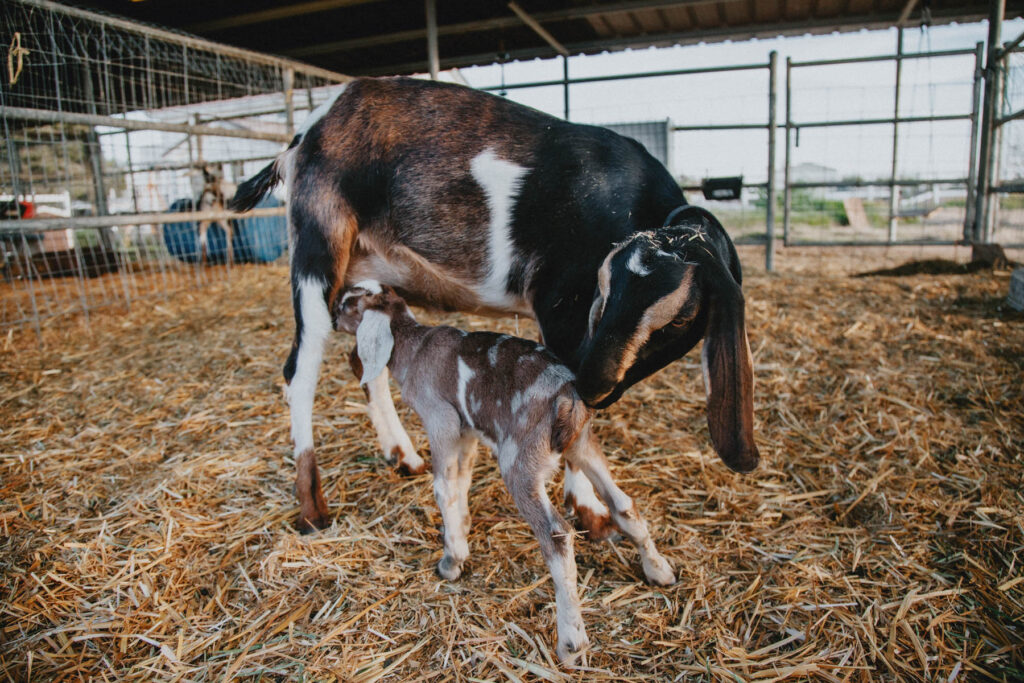
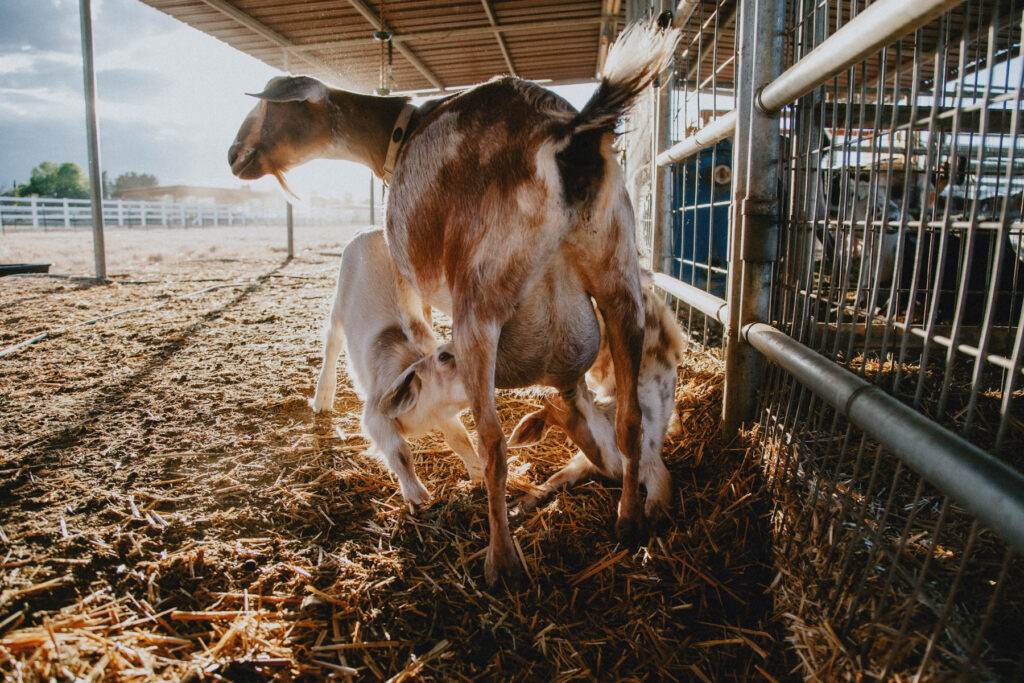
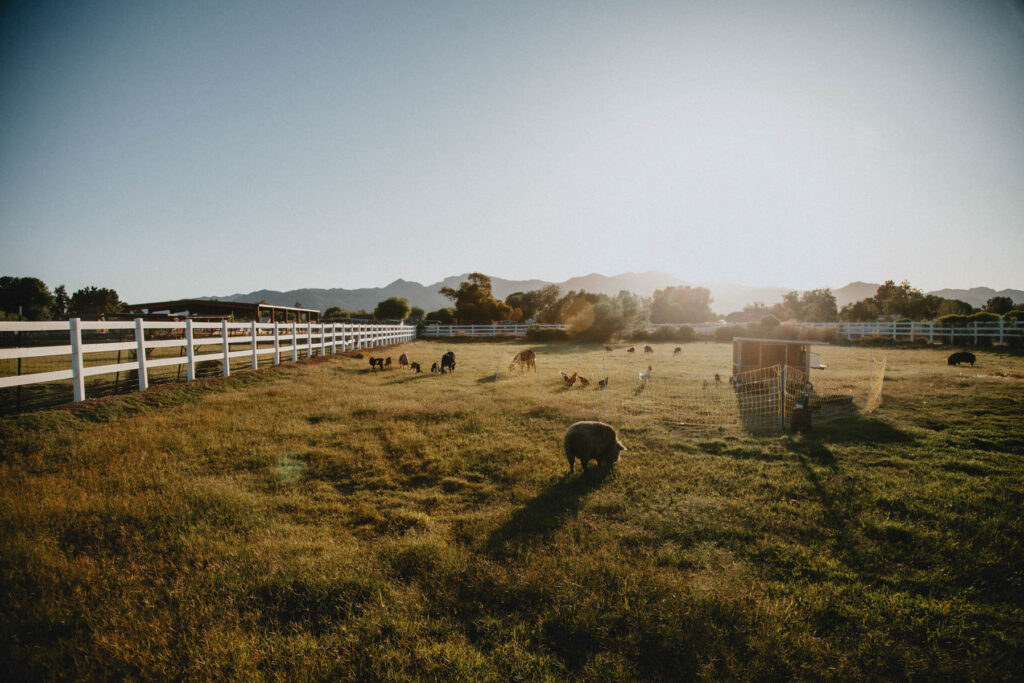
This post contains affiliate links, which means I make a small commission at no extra cost to you.
At What Age Should You Harvest a Dairy Goat Wether for Meat?
To achieve the tenderest meat and mildest flavor, butchering a dairy goat wether at around one year old is best. Technically you can butcher a goat at any age. As long as it’s healthy, it will be good for meat. However, if you’re going for high quality, mildly flavored meat, harvesting at about a year old is ideal. This works well for us seasonally anyway. Just as our barnyard was about to be full of new baby goats again, we reduced our herd by harvesting the wethers born the year before. The goats were the perfect size. Big enough to provide enough meat to make it worth our while, and small enough that we could still easily process them ourselves.
How Do You Raise Dairy Goat Wethers for Meat?
So by now you’re probably wondering HOW to start raising your own dairy goat wethers for meat. Growing out wethers for harvest can be as simple as keeping your wethers with the rest of your herd until they’re old enough to harvest. Goats are happiest in a herd with familial bonds anyway. It made sense to us to keep the boys with their moms and sisters. The wethers nursed from their mothers until they were old enough to wean (between 10-12 weeks old). They primarily ate down the grass and browse available in our one acre pasture. They also had supplemental alfalfa hay we provide to our dairy goats. Any sort of quality hay would do just fine if you don’t have enough grass and browse in your pasture year round.
We keep free choice minerals and fresh water out at all times for our goats. We also provide them Redmond animal salt. They have access to shelter and shade to protect from the elements. We give herbal deworming support as needed. Different climates require different levels of parasite prevention. It’s often best to check with local goat groups and mentors for advice for your region. With just this basic care, our wethers were happy and healthy their whole life.
Should You Feed Grain to Dairy Goat Wethers?
Unless your wethers were separated from their mothers too early, or have had a really hard time gaining weight, I wouldn’t feed them grain besides the occasional treat now and then. On our homestead we only feed grain to our milking does, and instead use alfalfa to help support healthy weight gain on our goats.
You can run into some heated online discussions about feeding alfalfa to male goats, and the calcium to phosphorus ratio. It’s important to do your own research, talk to other goat owners in your area with similar goals, and ask your vet’s advice. We felt comfortable feeding supplemental alfalfa to our dairy goat wethers. They had access to a pasture of grass and browse, were gaining weight well, had shiny coats, and all other markers of good health.
We prefer grass-fed and pastured meats for their health benefits, and only feed non-gmo, corn and soy-free grain to our animals. Grain is especially expensive these days. Feeding grain to our wethers that were doing just fine on a grass-fed diet felt unnecessary. Raising meat goats for 4H or show is a whole different ball game, and oftentimes a diet of grain is necessary.
When Should You Castrate Dairy Goat Wethers?
For the sake of the goat and an easier procedure, it is best to castrate a male goat within the first few days to three weeks of age.
Ok, this opinion might get me in trouble, but we have moved to castrating our wethers as early as possible instead of waiting twelve weeks. The procedure is honestly much easier and less painful for the animal the earlier you can do it. A concern with male goats, particularly castrated male goats, is that they can develop kidney stones known as urinary calculi. These stones can block the urethra and lead to a very painful death for the animal.
One prominent, older school of thought is to wait until 12 weeks or even later to castrate. The idea is that the longer a buckling has to accumulate testosterone before castrating, the lesser likelihood of him developing UC. However, a recent conversation with our vet led me to begin castrating much earlier than I used to. Our vet explained that everywhere in the world besides the U.S. considers it cruel to castrate after a few weeks of age. Additionally, recent studies show that diet, water quality, and minerals play a much greater role in the likelihood of a goat acquiring UC.
For all of these factors, and because we like to protect our goats with tetanus anti-toxin for banding and disbudding, we now do our best to band our wethers within the first couple weeks. Sometimes we are unsure of whether we’ll be selling a buckling as a buck or a wether. In those cases we might wait a few weeks longer, but definitely not to the twelve week mark that is so popular in the U.S.
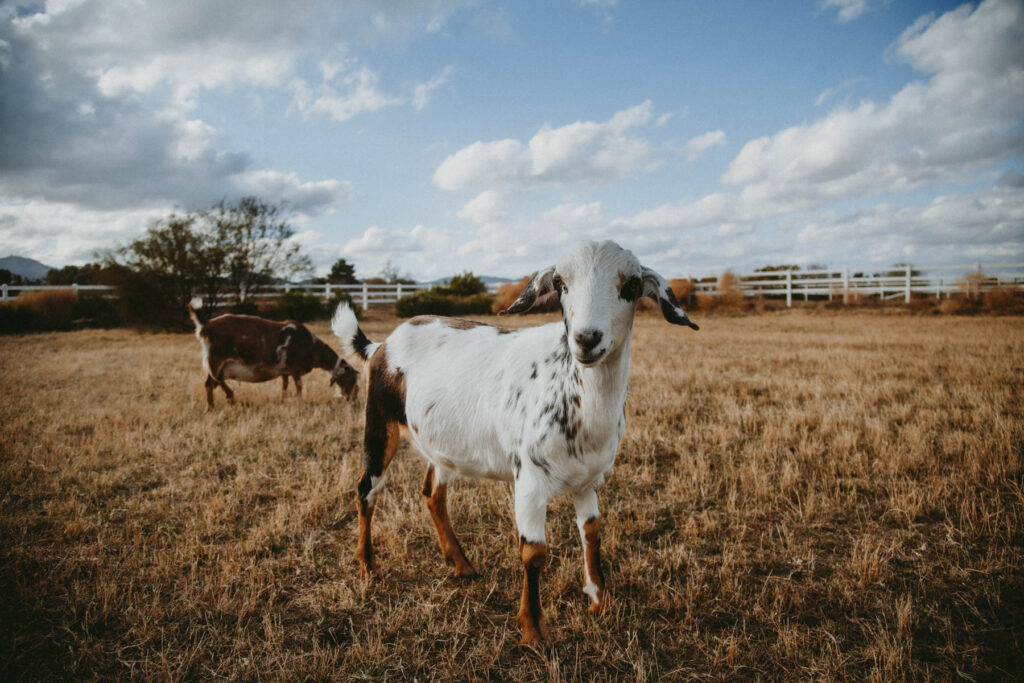

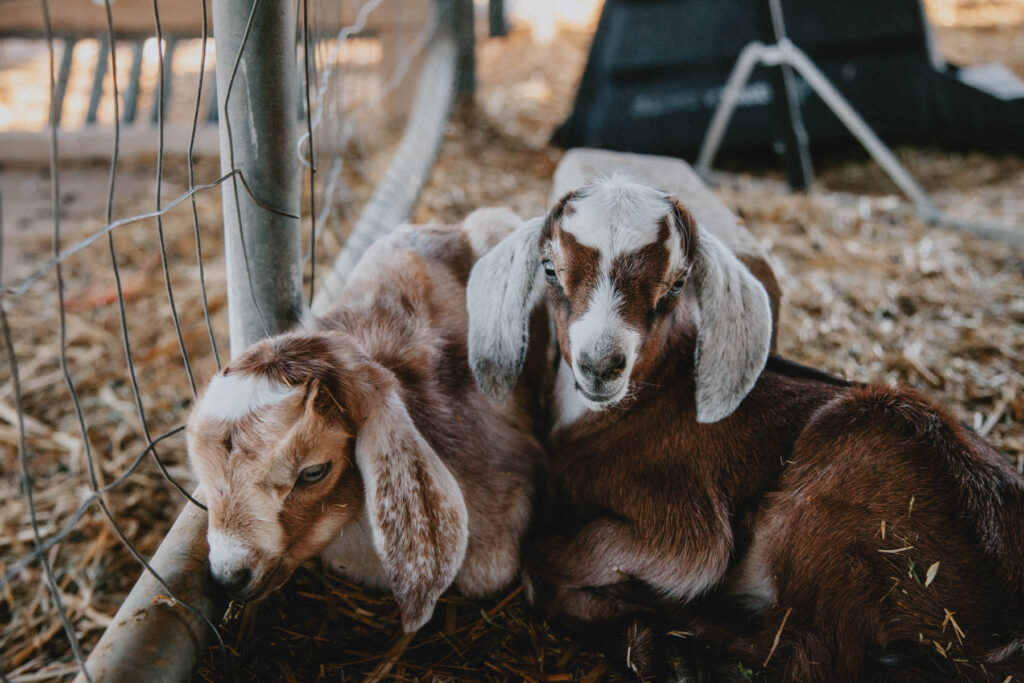
Should You Disbud Dairy Goat Wethers Raised for Meat?
Whatever the horn status is for the rest of your herd, maintain the same for your meat wethers. If you keep a herd of horned goats, definitely plan to keep your wethers’ horns intact so that they don’t get bullied. If your dairy herd is made up of disbudded goats, it’s going to be easiest on everyone if you disbud the wethers you’re raising for meat too. We use a disbudding iron and box to get the job done.
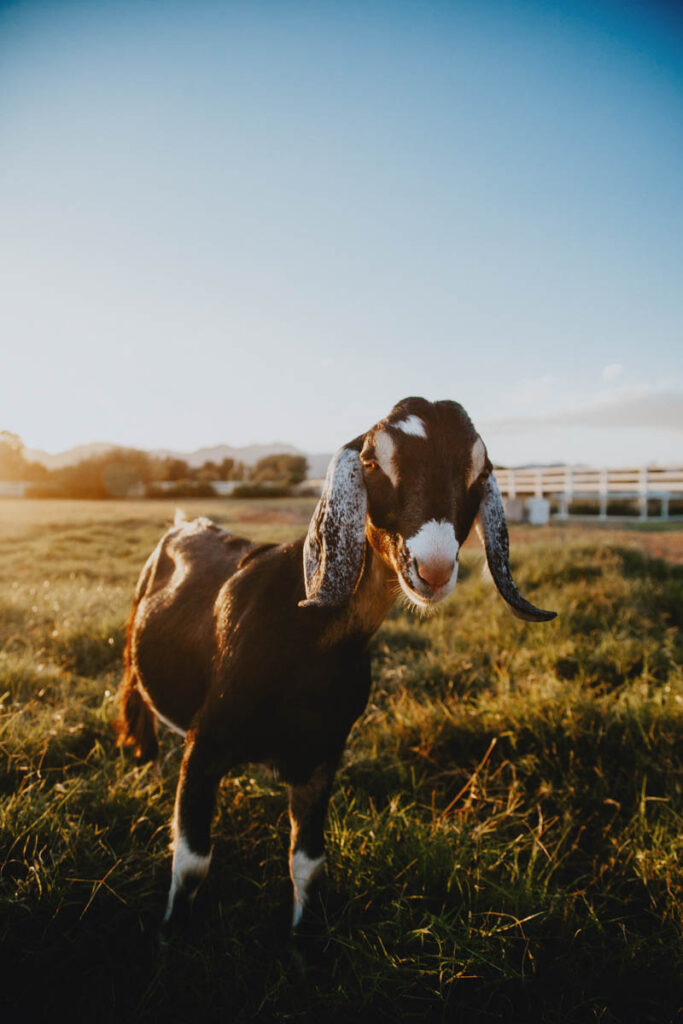
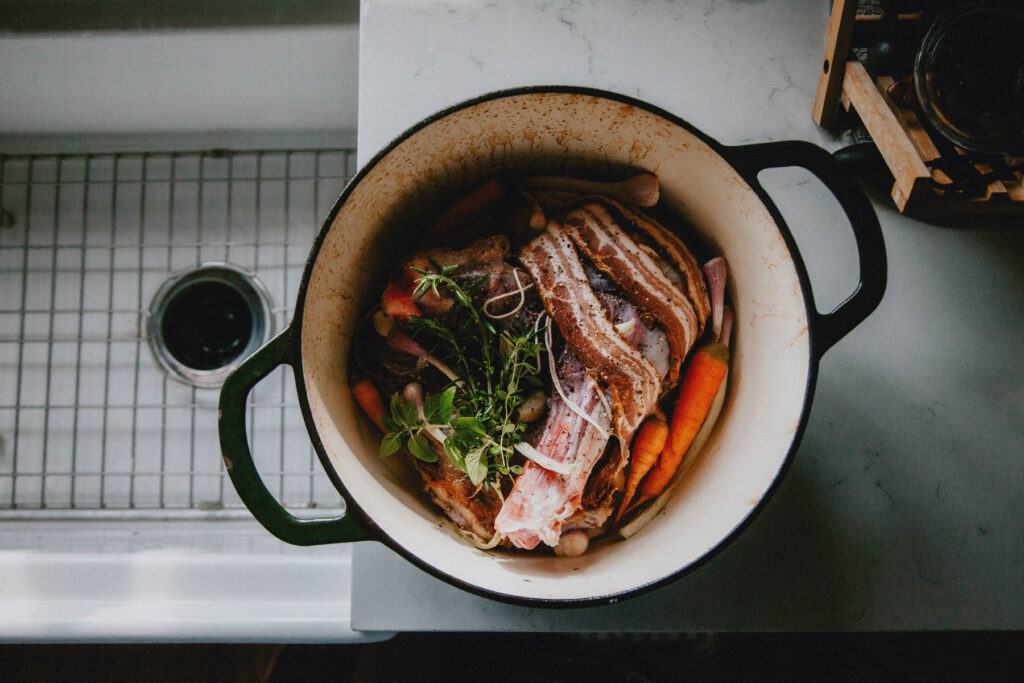
What Breeds of Goats Can You Raise for Meat?
Any breed of goat can be harvested for meat, but you will get the best meat-to-bone ratio from a meat breed of goat. Common meat and duel-purpose breeds include Boer, Kiko, Kinder, and Tennessee Meat Goat.
Because we keep goats for their delicious milk and wish to raise the female kids as dairy goats, we only keep and breed for dairy breeds of goats. Dairy goat wethers tend to produce less meat than a meat breed, but our mid-sized goats still give a nice amount of delicious and nutritious meat. We raise Mini Nubian goats on our homestead, and the wethers we harvested averaged about 90lbs live weight, and 50lbs hanging weight.
What Does Goat Meat Taste Like?
Absolutely delicious!! The goat meat we raised is fall-off-the-bone tender, and the flavor is rich and mild. We had never tasted Chevon (goat meat) before raising our own wethers for harvest, so we were a little nervous to try. Our family doesn’t enjoy “gamey” meats and we primarily eat homegrown beef and chicken. We were pleasantly surprised to discover that the goat meat tasted almost indistinguishable from beef. It hadn’t the slightest hint of “goaty” or gamey flavor. So much of the flavor of any meat depends on the health of the animal, their diet, and the way they were harvested. We were really happy to find that raising our wethers completely grass-fed and harvesting them in a stress-free way at home resulted in such delicious meat!
How Do You Cook Goat Meat?
We found that the key to cooking goat meat for maximum flavor and tenderness is to braise it low and slow. If you don’t have a dutch oven, or are short on time you can cook in a crockpot or instant pot. Braising in a bit of broth or wine with herbs and salt in a dutch oven produces a truly delectable meal. It’s hands-down our favorite way to enjoy goat meat.
Wrapping a leg shank in bacon ups the deliciousness factor even more! We kept most of our goat meat in primal cuts and roasts to make things simple. Soon we plan to try grinding some up to make goat burgers too!
Why Harvest Your Animals At Home?
The biggest reason we prefer to harvest on farm is that animals experience little to no stress. They have no idea anything is coming. With a skillful shot they are rendered insensible before they even hit the ground.
We have hired an on-farm butcher to harvest our steers in the past. It was always a great harvest day for us and our animals. When we brought our pigs to a butcher last summer, it was a whole different experience. Even with our efforts to keep things as calm as possible while we loaded them onto the trailer, the pigs were stressed. The butcher we used didn’t prioritize stress-free deaths for the animals. Ultimately our pigs ended their lives in a way that we weren’t happy about. We wanted things to be different with the goats.
Our wethers never left the homestead once. They ended their lives just a few feet away from where they were born, and the whole experience was completely stress-free for them. We felt really grateful and proud of the way we were able to raise them and harvest them too.
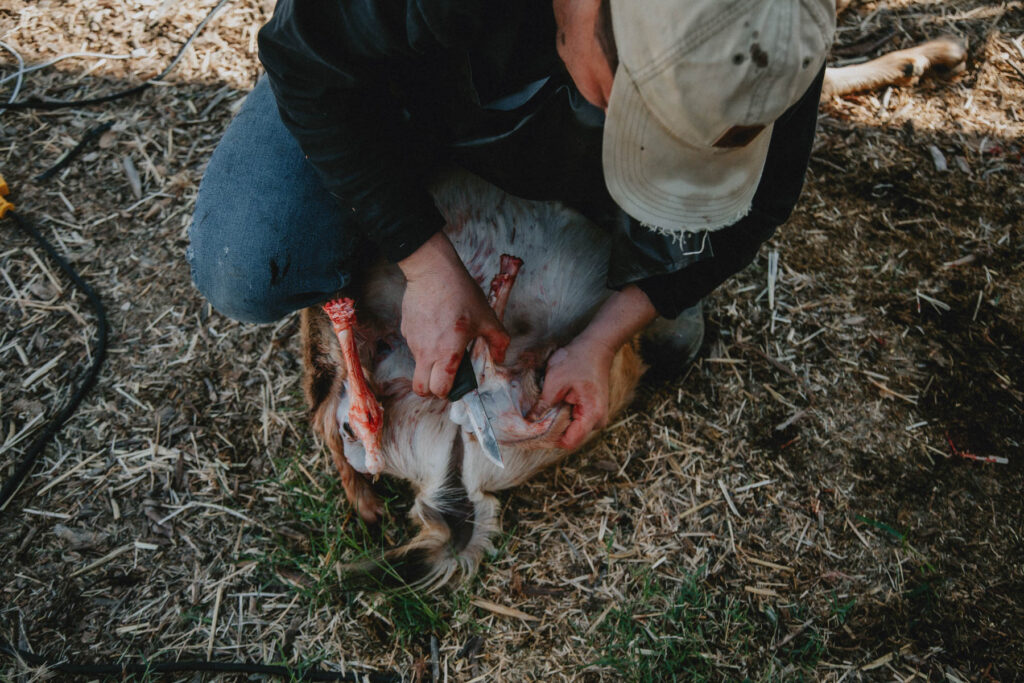
So those are the basics about raising dairy goat wethers for meat! I truly believe it’s so worthwhile, as well as an ethical, sustainable option for filling the freezer. In the next post we’ll explore how we learned how to do a home harvest with minimal set-up. I’ll share how we broke down the carcasses into primal cuts, and then cut those down into pieces that fit in the dutch oven or crockpot.
Have you raised dairy goat wethers for meat? Or have you ever considered it? What are your thoughts about the idea? Let me know in the comments!

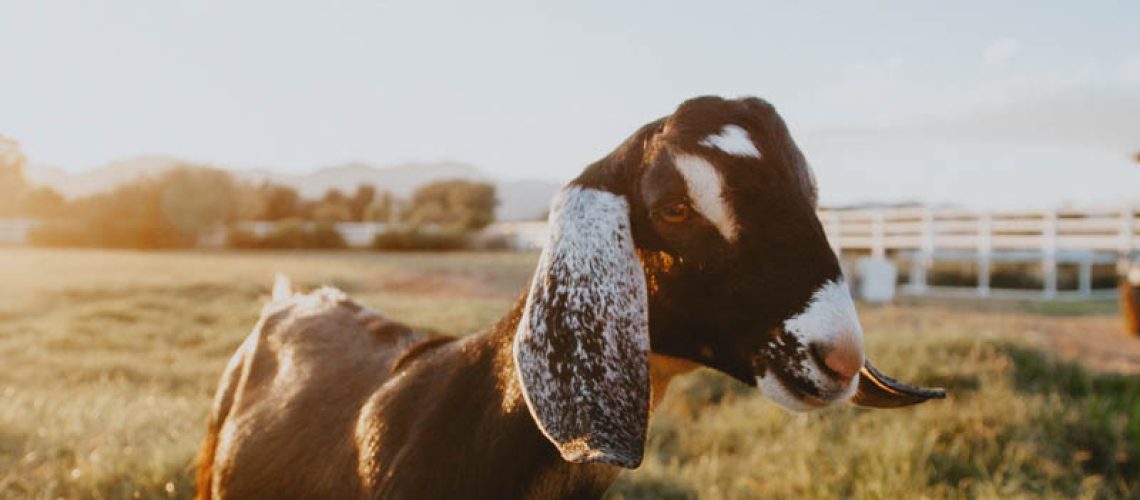

One Response
Yes, we keep wethers for meat! We raise Oberhaslis, and, like you, we see the meat as a natural byproduct of the dairying. . .
I’ve found James Whetlor to be a helpful mentor with his cookbook GOAT, but also his articles and interviews. If you’re not familiar with him – see what he’s done for goat in Great Britain. It’s interesting how he got involved in raising “billies” for meat after talking to his friends that had a cheesemaking business. He’s popularized Goatober – and trying to get goat meat on the menu at restaurants in Western cultures. He has the on-line store Cabrito – and he also processes “ex-dairy goats.”
So far, we’ve had our goats processed by professional butchers. But, this fall, we’re going to have my daughter, who is a sous chef and butcher, and her boyfriend, fellow chef, do the processing here at our farm.
I’ve been trying to challenge myself to get some goat meat out of our freezer at least once a week so I get more comfortable with cooking it. Like you, we prefer to cook most cuts slow and low – and bone-in. However, this past weekend, I made some delicious meatballs with ground goat meat, and I can’t wait to do that again!
My goal is to lean much more on our own chicken and goat meat – and even less on any purchased meat from elsewhere.
I appreciate your thoughts – and I’m looking forward to the rest of this series, esp. as we do the processing ourselves.